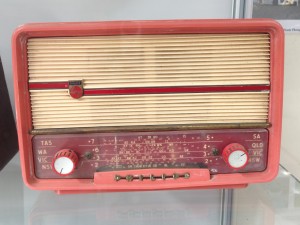Short blurb…
This is a didactic report on the concept behind the Audio Organica project focussing on the Morell Bridge sound space as a medium.
Audio Organica – The Producer
The idea of Audio Organica relates back to Marshall McLuhan’s notion that the age of anxiety is upon us, and the defragmentation that exists between man, compels us to participate in electric media as a part of our bodies (2). This is as true now as it was in 1964 seen in the repetition of the mechanical age’s extension of our limbs and its likeness to the digital age’s extending of our senses. Sound is one sense that has been heavily impacted by the latter — it is everywhere, and there are endless ways to harvest and capture it, however sometimes, our senses can be whitewashed by not only the ease of access to sound manipulation programs like Protools, but by the residual spill from the mechanical age heard in noise pollution.
Having fallen down the rabbit hole of digital sound, I sometimes forget what things sounded like when they were first produced — spoken, sang, or plucked. Such heightened simulacra extending so far from the original has caused a kind of anxiety in me. I have on occasion been left behind by the rapidly moving advances of software, like with the Protools 11 update, and therefore, thought I could combat this by returning sound to the Earth — however oil soaked the soil may be (1). I summoned the help from some of Melbourne’s talented multi-disciplined sound artist to express their oral and aural thoughts to the ducks, swans, fish, joggers, rowers and semitrailers.
To preface the project, I recorded my didactic style voiceover with an NT1000 microphone on Protools, and an SE reflection filter was used to reduce sonic bounce. I have looped a section of Nick’s guitar playing for the introduction and I have used an extended portion of the same song to finish. The whispers were recorded in the studio environment and duplicated on several tracks to emulate The Whispering Wall (6). To increase the overall volume and limit the peaks, I have applied a Maxim limiter to a stereo master track, much of the session has volume automation applied.
On reflection, I have been made aware of the work that must go into high-end radio productions such as Radio National, This American Life and Radio Lab, furthermore, I have learned about the importance of controlling background noise where possible — I am astounding at just how immune I have become to the sound of the city hum!
I began to wonder what this space would have been like several hundred years ago, before westerners arrived, which brought me to an idea for the next piece… I am hoping to interview the Indigenous Arts Officer for The Torch and invite him to play traditional instruments and talk in depth about the Wurundjeri people of the Kulin Nation in the space.
_________
References and credits
- Cox, T. (21 August, 2010), Pg. 44, Past Echoes: New Scientist, London UK , Reed Elsevier.
- McLuhan, M. (1964), Pg.3-6 and 64-66, ‘Introduction’ and ‘Challenge and Collapse: The Nemesis of Creativity’ an excerpt from Understanding Media, London and New York, McGraw-Hill
- Till, Dr. R. (15th of November, 2014), Pg. 44, Past Notes: New Scientist, London UK , Reed Elsevier.
- Luis de Victoria, T. (2011), Choir, sourced from FreeSounds.org, 20110409.choir.01.wav by dobroide.
- Costello, N. (2015), Song: Shiver, Australia.
- Whispers by Juliette Hanson (2015).
